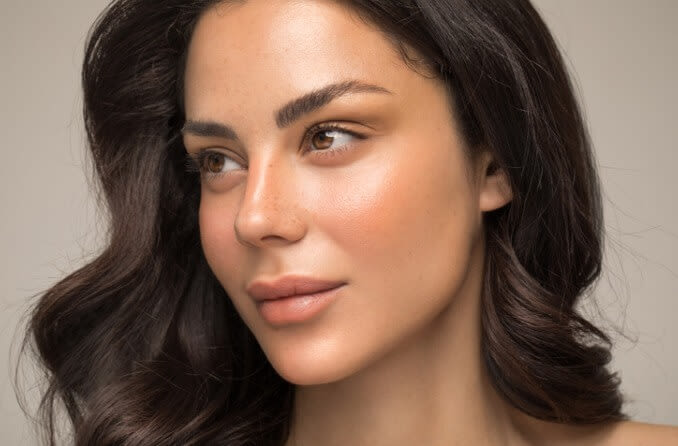The eyebrows are not just a facial beauty accent; they also serve as a formidable protector, playing an indispensable role in shielding the eyes, regulating emotions, and adapting to the surrounding environment. Let’s explore and marvel at the unique world of eyebrows, where beauty gracefully merges with functionality, bringing forth unexpected discoveries and ceaseless fascination.

What’s the purpose of eyebrows?
They protect our eyes from moisture and light
Eyebrows are integral to maintaining the cleanliness and clarity of our eyes. Their outward growth pattern, directed toward the sides of the face, effectively channels moisture away from the eyes, ensuring optimal vision. The intentional design of eyebrow hairs, naturally growing outward, guides moisture away from the eyes, redirecting it toward the sides of the head. In addition, eyebrows act as a protective barrier, moderating the amount of light entering the eyes and safeguarding them from dirt.
They help us express emotions and recognize each other
Beyond their role in expressions, eyebrows serve as a vital component of human communication. The subtle movements of a raised eyebrow can convey skepticism or interest, while the simultaneous elevation of both eyebrows expresses surprise. This dynamic feature not only enhances our ability to communicate emotions but also plays a crucial role in facial recognition.
In a notable 2021 study, Emotion Recognition: Researchers at the University of California, Berkeley developed a machine learning model that can recognize six basic emotions (happiness, sadness, anger, surprise, fear, and disgust) based solely on eyebrow movements. This study was the first to demonstrate the potential for using eyebrows as a reliable source of emotional information. The study manipulated photographs to exclude either eyes or eyebrows. Surprisingly, when eyes were absent, participants could still identify famous faces 60 percent of the time. However, when eyebrows were omitted, the identification rate dropped to just 46 percent. This underscores the importance of eyebrows, suggesting that they are as crucial, if not more so, than eyes in facilitating effective face recognition.
What role does genetics play in eyebrows?
Genetics plays a crucial role in determining the shape, color, and thickness of eyebrows. Genes control the development of hair follicles, where eyebrows grow. These genes also regulate melanin production, the pigment responsible for the color of eyebrows.
Eyebrow Shape
The shape of eyebrows is determined by the positioning of hair follicles. Genes control the arrangement of these follicles, thereby determining the shape of the eyebrows. For instance, if the follicles are closer together, the eyebrows will be thicker and denser.
Eyebrow Color
The color of eyebrows is determined by the amount of melanin produced by the hair follicles. Melanin is the pigment responsible for the color of skin, hair, and eyebrows. Genes regulate the production of this melanin, thereby determining the color of the eyebrows. For example, individuals with more melanin will have black or brown eyebrows.
Eyebrow Thickness
The thickness of eyebrows is determined by the number of hair follicles. Genes control the quantity of these follicles, thereby influencing the thickness of the eyebrows. For instance, individuals with more follicles will have thicker eyebrows.
Conclusion
Eyebrows not only enhance appearance but also have a crucial protective function for the eyes and contribute to expressing emotions and body language. Their existence is shaped by genetic factors, environmental influences, and personal grooming habits. In summary, eyebrows serve a dual role, combining aesthetic enhancement with the vital function of safeguarding the eyes and conveying emotions.
FAQs
- Which eyebrow shape is most attractive?
There is no one-size-fits-all answer as attractiveness is subjective and varies among individuals. The most attractive eyebrow shape is subjective and depends on factors such as face shape, features, and personal preferences. It’s best to choose a shape that complements your facial features and makes you feel confident.
- Why do my eyebrows fall out when I rub them?
Rubbing your eyebrows vigorously can cause the hairs to weaken and break, leading to eyebrow hair loss. Additionally, constant rubbing may damage the hair follicles and hinder the natural growth cycle of your eyebrows. It’s important to handle your eyebrows gently to prevent unnecessary stress on the hair and follicles. If you’re experiencing persistent hair loss or have concerns, it’s advisable to consult with a healthcare professional or a dermatologist.
- Are girls with thick eyebrows attractive?
Yes, beauty standards vary, and attractiveness is subjective. Many people find individuals with thick eyebrows attractive, as they can enhance facial features and contribute to a bold and expressive look. Ultimately, personal preferences play a significant role, and what matters most is feeling confident and comfortable in your own appearance.
- Should I touch my eyebrows?
No, it’s generally advisable to minimize touching or rubbing your eyebrows to prevent potential damage to the hair and follicles.
- Should you ever shave your eyebrows?
Yes, the decision to shave your eyebrows is subjective and depends on personal preference. Some people choose to shave their eyebrows for various reasons, such as aesthetic preferences or fashion choices. Ultimately, whether or not to shave your eyebrows is a personal decision.






